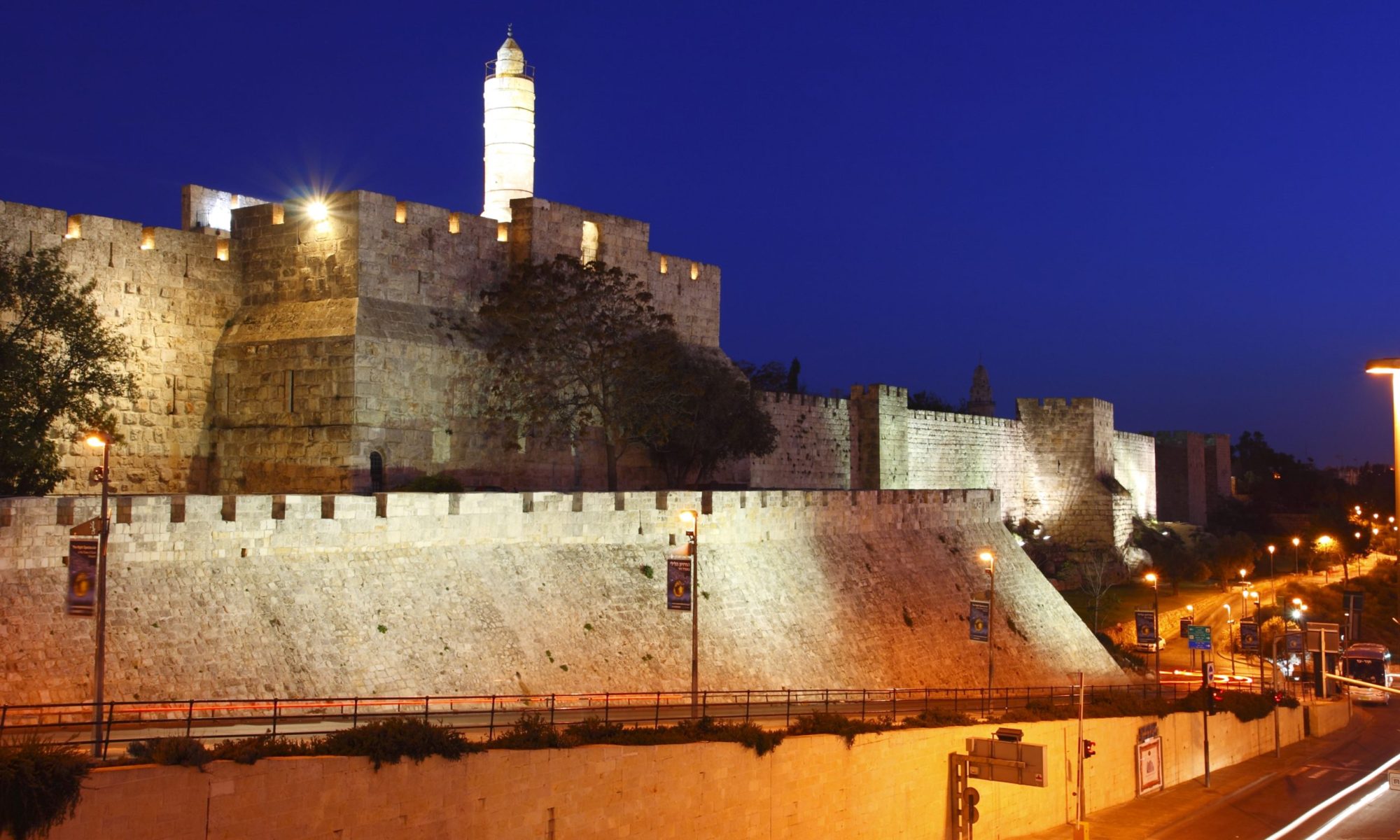
Building a Kosher Sukkah
The basics of building a sukkah and living inside it
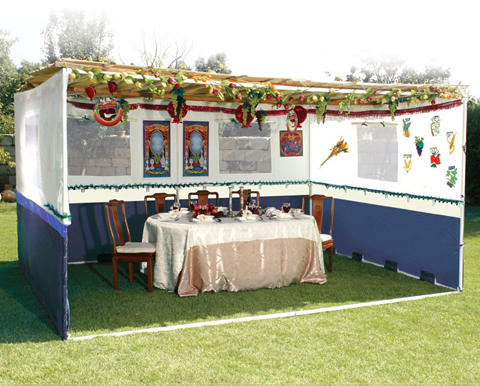
Inside the Sukkah 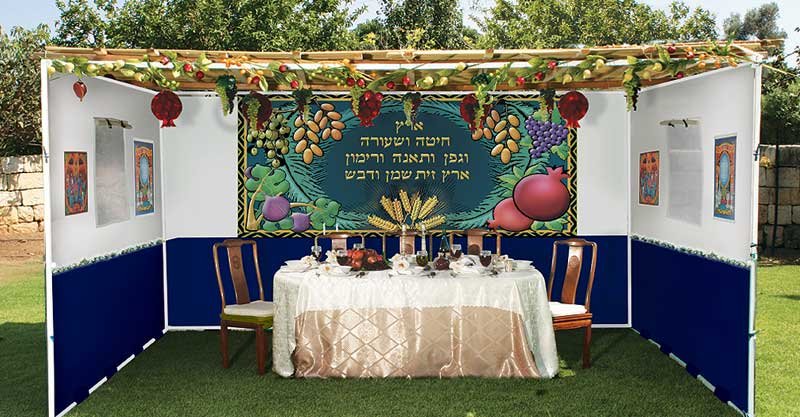
Sukkah decorated with the seven species 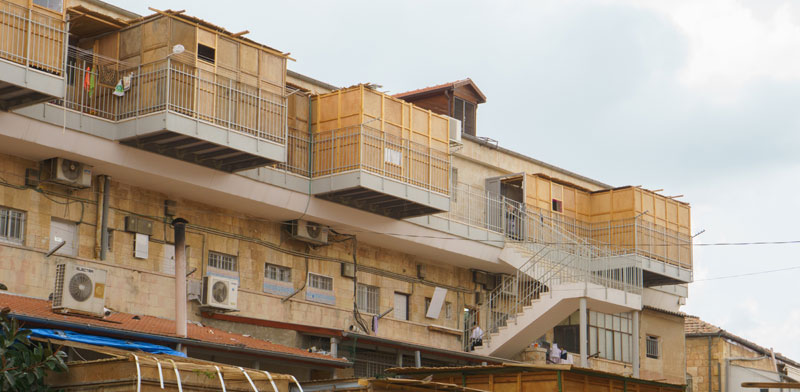
Sukkah inside your balcony 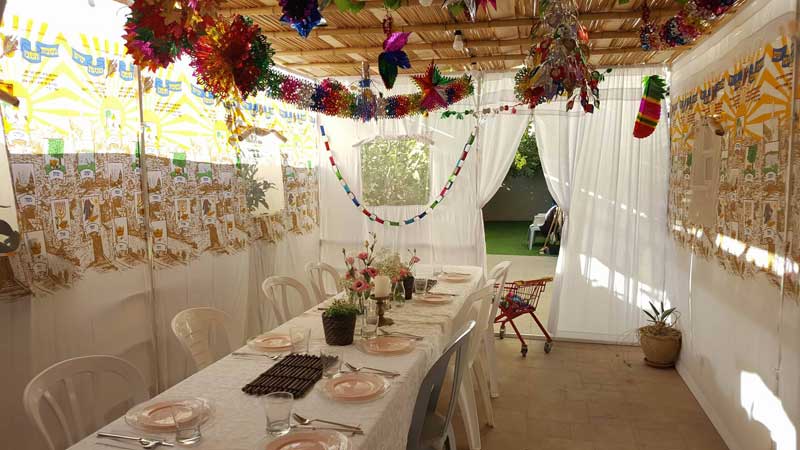
Sukkah always has to be decorated
Intro to Sukkah Building
For forty years, as our ancestors traversed the Sinai desert prior to their entry into the Holy Land, miraculous “clouds of glory” surrounded and hovered over them, shielding them from the dangers and discomforts of the desert. In the words of the verse (Leviticus 23:42–43), “For a seven-day period you shall live in booths. Every resident among the Israelites shall live in booths, in order that your [ensuing] generations should know that I had the children of Israel live in booths when I took them out of the land of Egypt. I am the L‑rd, your G‑d.”
Ever since, we remember G‑d’s kindness, and reaffirm our trust in His providence, by “dwelling” in a sukkah for the duration of the Sukkot festival, from the 15th through the 22nd of the Hebrew month of Tishrei (in Israel, through the 21st only).
A sukkah is essentially an outdoor hut that is covered with vegetation, known as sechach. But there are many guidelines and requirements that must be followed in its construction, and regarding the location where it is erected, in order for a sukkah to be deemed “kosher”—fit for use.
There are excellent prefabricated sukkahs available, in a variety of sizes, from many Judaica vendors.
The seven days of Sukkot—celebrated by dwelling in the sukkah, taking the Four Kinds, and rejoicing —are followed by Simchat Torah.
Where Do I Build My Sukkah?
Construct your sukkah outdoors, ideally in a spot that’s most accessible to your residence. Popular sukkah locations include: porches, backyards, courtyards, lawns, balconies and rooftops. Basically, any location under the open sky.
An important requirement is that there should be nothing between your sukkah and the open sky. So make sure that there are no trees, canopies or roofs of any sort overhanging your sukkah.
What Materials Do I Need?
If you’re building your own sukkah, here are the basic materials you will need:
The Walls: The walls of a sukkah can be made of any material, provided that they are sturdy enough that they do not move in a normal wind. You can use wood or fiberglass panels, waterproof fabrics attached to a metal frame, etc. You can also use pre-existing walls (i.e, the exterior walls of your home, patio or garage) as one or more of the sukkah walls. An existing structure that is roofless or has a removable roof can also be made into a sukkah by covering it with proper sechach.
The Roof Covering: The sukkah needs to be covered with sechach—raw, unfinished vegetable matter. Common sukkah roof-coverings are: bamboo poles, evergreen branches, reeds, corn stalks, narrow strips (1×1 or 1×2) of unfinished lumber, or special sechach mats.
Mats made of bamboo, straw or other vegetable matter can be used only if they were made for the purpose of serving as a roof covering.
The sechach must be detached from its source of growth—thus a live trellis, or branches still attached to a tree, cannot be used.
You may use only vegetable matter that has not been previously used for another purpose. Additionally, it must never have acquired the status of a utensil (through being used as part of a crate or tool), nor have been capable of becoming ritually impure.
You may also need some plain, unfinished wood beams to construct a framework on which to lay the sechach.
Chairs and Tables: Remember, you will be taking all your meals in the sukkah for the duration of the festival. Plus, it is a special mitzvah to invite guests to share your sukkah.
Decorations: Many communities decorate the sukkah with colorful posters depicting holiday themes, by hanging fresh fruits or other decorations from the sechach beams, or both.
The Dimensions and Other Requirements
A sukkah must have at least two full walls plus part of a third wall (the “part” needs to be a minimum of 3.2 inches wide). It is preferable, however, that the sukkah have four complete walls.
The Walls: The walls must be at least 32 inches high, and the entire structure may not be taller than 30 feet. In length and breadth, a sukkah cannot be smaller than 22.4 inches by 22.4 inches. There is no size limit in how large—in length and width—a sukkah may be.
The Sechach: There must be sufficient sechach to provide enough shade so that in a bright midday there is more shade than sun seen on the floor of the sukkah. The sechach has to be spread out evenly over the entire sukkah, so that there should not be any gap larger than 9.6 inches.
Anything that is directly supporting the sechach should not be made out of materials that are not fit to be used as sechach. Thus, if the sechach rests directly on the sukkah walls, strips of wood may need to be used to support the sechach. In addition, the sechach should not be be tied with wire or fastened with any metal object.
Some More Details: A sukkah must be built anew every year for the purpose of the mitzvah. This requirement, however, applies only to the sechach, since it is the sechach that makes the sukkah a sukkah. Thus, one can leave the walls standing all year, and place the roof covering before the festival. If the sukkah and the sechach have been up all year, one can simply lift up and replace the sechach, which allows the sukkah to be considered as new.
Follow “Israel with Moshe” on Facebook
Subscribe to “Israel with Moshe” YouTube channel
Follow “Gates to Israel” on Facebook
Subscribe to “Gates to Israel” YouTube channel
